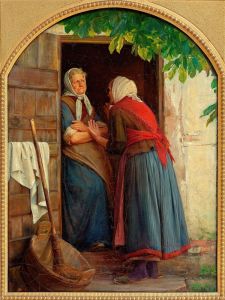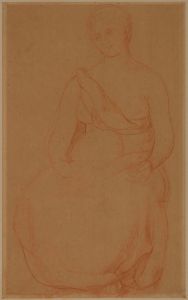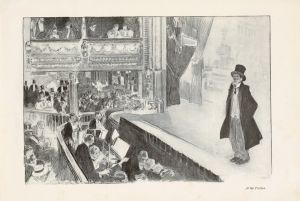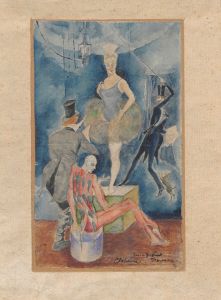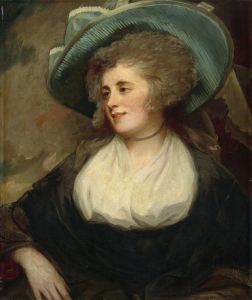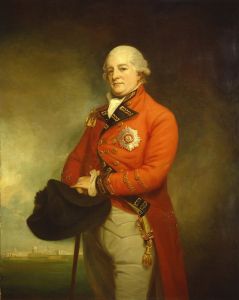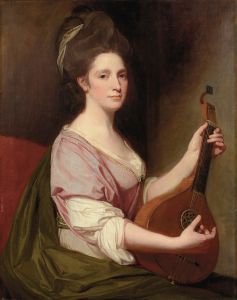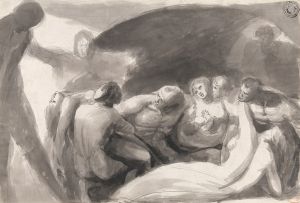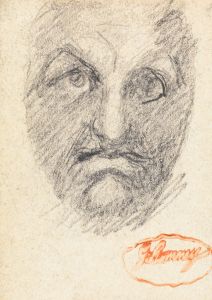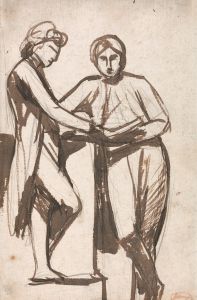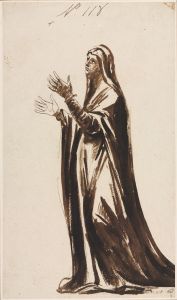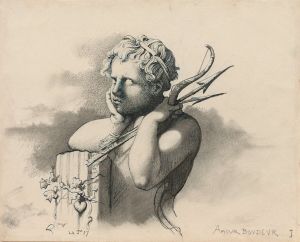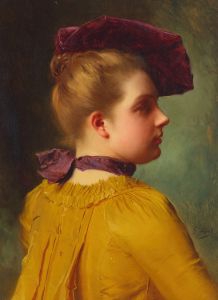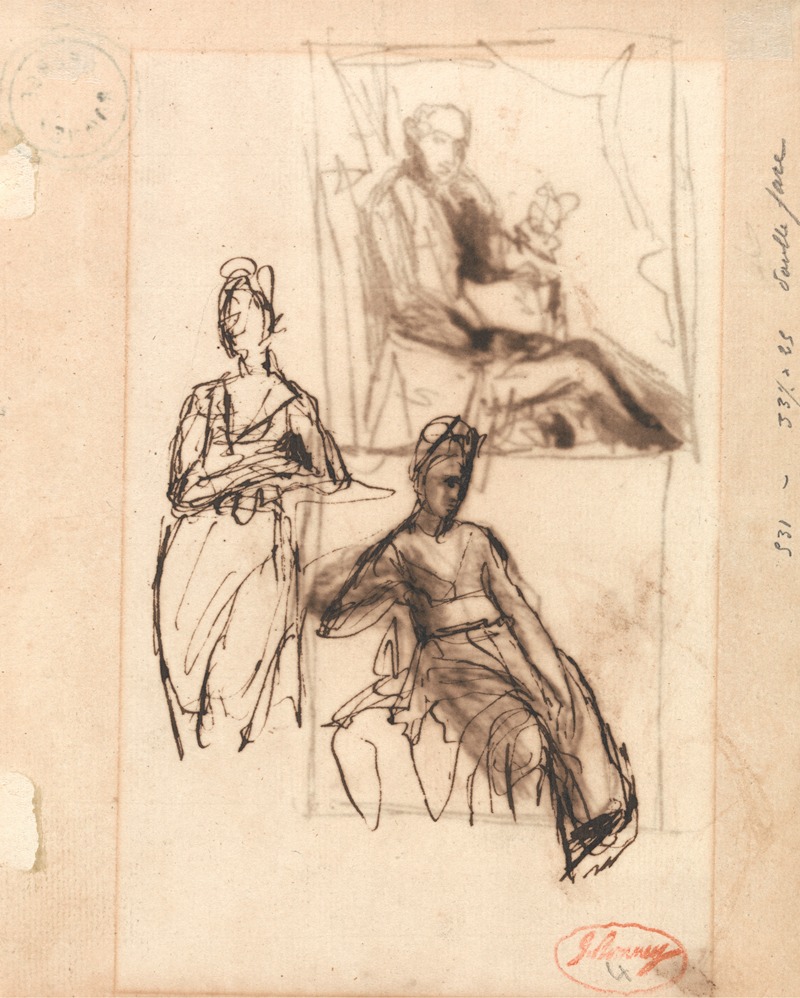
Seated Man and Seated Woman
A hand-painted replica of George Romney’s masterpiece Seated Man and Seated Woman, meticulously crafted by professional artists to capture the true essence of the original. Each piece is created with museum-quality canvas and rare mineral pigments, carefully painted by experienced artists with delicate brushstrokes and rich, layered colors to perfectly recreate the texture of the original artwork. Unlike machine-printed reproductions, this hand-painted version brings the painting to life, infused with the artist’s emotions and skill in every stroke. Whether for personal collection or home decoration, it instantly elevates the artistic atmosphere of any space.
"Seated Man and Seated Woman" is a painting by the British artist George Romney, who was one of the leading portrait painters in late 18th-century England. Romney was born on December 26, 1734, in Dalton-in-Furness, Lancashire, and he became known for his portraits of high society figures, as well as his depictions of literary and historical subjects.
The painting "Seated Man and Seated Woman" is an example of Romney's skill in capturing the likeness and character of his subjects. Although specific details about the painting's creation, such as the exact date and the identities of the sitters, are not well-documented, it is consistent with Romney's style and thematic interests during his career.
Romney's work is characterized by its elegant composition, refined brushwork, and the ability to convey the personality and status of his subjects. In "Seated Man and Seated Woman," these qualities are evident in the relaxed yet dignified poses of the figures, as well as the attention to detail in their clothing and expressions. The painting likely reflects the neoclassical influence that was prevalent in British art during the late 18th century, emphasizing simplicity, clarity, and harmony.
Romney's career was marked by his rivalry with Sir Joshua Reynolds and Thomas Gainsborough, two other prominent portrait painters of the time. Despite this competition, Romney achieved considerable success and was highly sought after by patrons. He painted many notable figures, including Emma Hamilton, who became his muse and the subject of numerous works.
Throughout his career, Romney produced a vast number of portraits, and his work was widely admired for its elegance and psychological depth. His ability to capture the subtleties of his sitters' personalities made him a favorite among the British aristocracy and the emerging middle class.
"Seated Man and Seated Woman" is a testament to Romney's talent and his contribution to the art of portraiture. While the painting itself may not be as famous as some of his other works, it nonetheless exemplifies the qualities that made Romney one of the leading artists of his time.
George Romney continued to paint until his health declined in the early 19th century. He died on November 15, 1802, in Kendal, Westmorland. His legacy endures through his numerous portraits, which remain significant examples of 18th-century British art.
In summary, "Seated Man and Seated Woman" by George Romney is a fine representation of the artist's skill in portraiture, capturing the elegance and character of his subjects with refined brushwork and a keen eye for detail. Although specific information about the painting is limited, it stands as a testament to Romney's enduring influence in the world of art.





